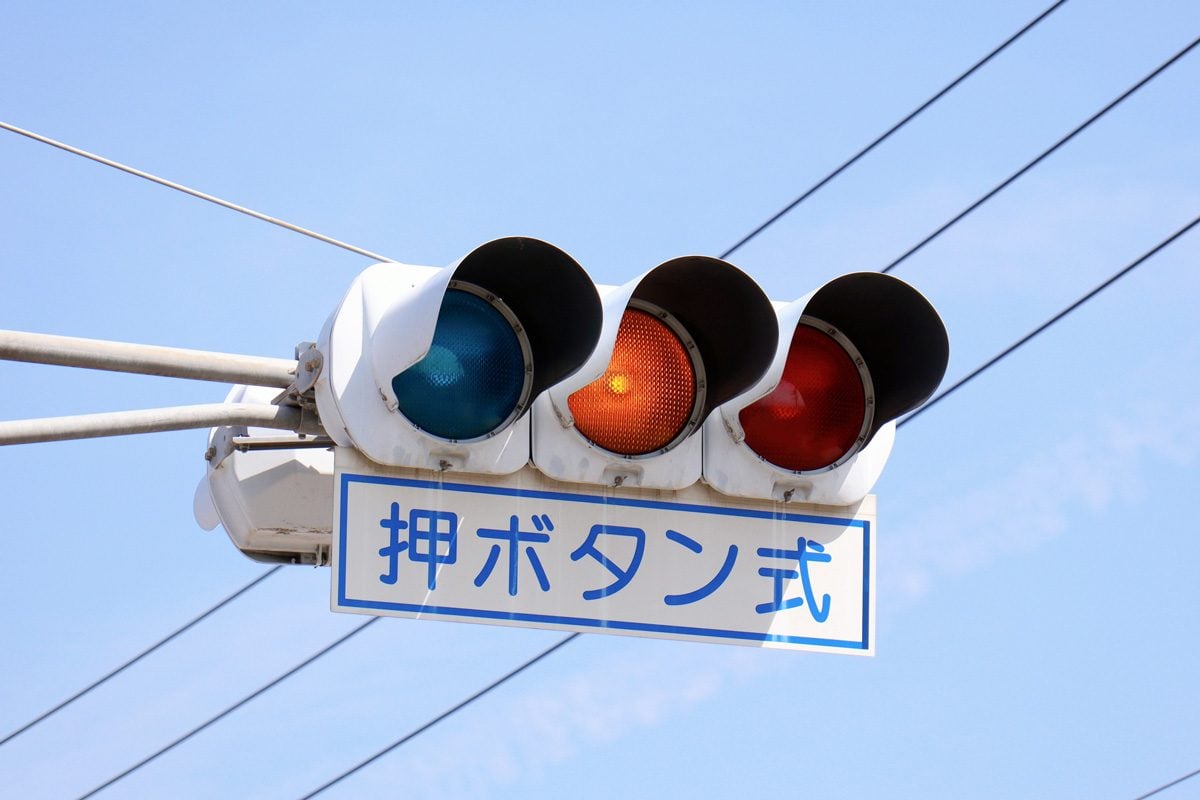The Curious Case of Japan’s “Blue” Traffic Lights
Traffic lights are one of the most universally recognized symbols on the road, with red meaning stop and green meaning go. This system is used in most countries around the world. However, if you’ve ever visited Japan, you might have noticed something unusual—some traffic lights appear more blue than green. In fact, even the ones that look clearly green are often referred to as “ao,” which means blue in Japanese. This has led many travelers and language learners to wonder: why are traffic lights considered blue in Japan?
To understand this, it helps to look at the history of the Japanese language. According to Katsuhiro Ito, a Japanese language teacher with over 20 years of experience, ancient Japanese had only four basic color terms: red, black, white, and blue. The word “ao” was used to describe a wide range of colors, including what we now call green. This meant that in the past, people would use “ao” to refer to green things.
The term “midori,” which now refers to green, began to appear during the Heian Period (794-1185) and was associated with nature, greenery, and vitality. Despite this shift, the influence of the old color terminology still lingers in modern Japanese. Ito explains that even today, some green objects are still called “ao.” For example, Makiko Yamagata, a native Japanese speaker from Nagoya, says she grew up calling green traffic lights “blue” and continues to do so with her children.
A Historical Perspective on Color Terminology
The historical connection between “ao” and green is not unique to Japan. Many languages once had limited color vocabulary, and it wasn’t until later that additional terms were introduced. Even though Japanese has since evolved, the old way of referring to green as “ao” remains embedded in everyday speech.
When traffic signals were first introduced to Japan in the 1930s, they were sometimes called green, just like in other countries. However, after World War II, the Road Traffic Act of 1960 officially described the green light as “ao.” Since then, the term has remained in use, despite some controversy among linguists who felt it should be called green instead.
In 1973, the Japanese government attempted to resolve the issue by issuing a cabinet order that required traffic lights to be a shade of blue-green. This compromise aimed to satisfy both international standards and traditional Japanese terminology. While this helped standardize the appearance of traffic lights, it also left many foreigners confused about why they are still called “blue.”
Other Examples of “Blue” Things That Are Actually Green
Traffic lights aren’t the only things in Japanese that are called “blue” when they’re actually green. There are several other examples where the word “ao” is used to describe green objects or concepts. These include:
- Aoringo: A green apple
- Aotake: Young bamboo
- Aota: A rice field with unripe green rice plants
- Aonori: A type of green seaweed used in dishes like okonomiyaki
According to Ito, “ao” can also mean young or new. For instance, “aoba” literally translates to “blue leaves,” but it is used to describe young green leaves. Similarly, “aoi” or “aoaoshii” can be used to describe something fresh or inexperienced, much like how English speakers might say someone is “green” to mean they lack experience.
This linguistic nuance shows how the word “ao” has developed multiple meanings over time. It’s not just about color—it also carries connotations of youth, freshness, and immaturity.
Are Traffic Lights in Japan Actually Blue?
While traffic lights in Japan are called “ao” (blue) in the Japanese language, they are visually green. Some may have a slightly blue tint, but they are generally understood as green. This can be confusing for non-native speakers, especially when traveling in Japan and hearing locals refer to the green light as “blue.”
If you’re planning a trip to Japan and find yourself in a car with native speakers, remember: “ao” means go, not green.
Additional Insights into Japanese Language and Culture
Beyond traffic lights, the Japanese language offers many other interesting examples of how color terminology has evolved. From food to nature, the use of “ao” to describe green things highlights the deep historical roots of the language. Understanding these nuances can help travelers better navigate cultural differences and appreciate the richness of the Japanese language.
Whether it’s through the use of color words or expressions related to youth and freshness, the Japanese language continues to reflect its historical influences while adapting to modern needs. This blend of tradition and innovation makes Japan’s linguistic landscape both fascinating and unique.







